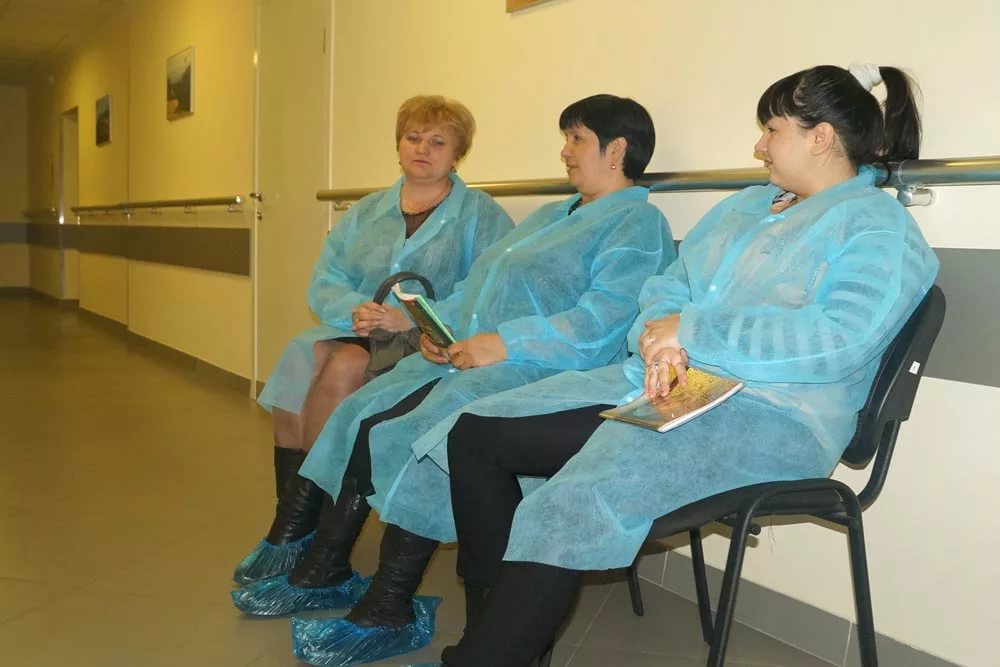Currently, the examination of the quality of medical care is given special attention. It is the main part of the control system for the provision of related services. The main objective of the examination of the quality of medical care is to detect both gross and minor violations in its provision. Authorized persons evaluate the timeliness indicator, study the treatment regimen and diagnostic results, on the basis of which therapeutic measures were prescribed. The verification procedure is strictly regulated.
The concept
An examination of the quality of medical care is the implementation of a number of measures, during which authorized persons check the timeliness of services, the level of effectiveness of the prescribed treatment, and also find out whether the originally planned result was achieved.
In other words, an assessment is always carried out according to several parameters. These include the following:
- Timeliness of services.
- Literacy of the choice of certain diagnostic methods.
- The effectiveness of the prescribed treatment.
- The course of the rehabilitation period.
- The degree of achievement of a positive result.
The procedure for the examination of the quality of medical care is strictly regulated by regulatory documents.

The legislative framework
In this issue, the main thing is Federal Law No. 323, which reflects the basics of protecting the health of the population of the Russian Federation. The document was approved in 2011. When conducting an examination of the quality of medical care, authorized persons rely on article 64 of this document.
The second most important is Order No. 422AN. This document spells out the criteria for assessing the quality of medical care expertise. Information on state control is reflected in Government Decision No. 1152 (approved in 2012).
There is an order for the examination of the quality of medical care No. 230. It regulates the organization and conduct of the audit, its timing and scope. This order on the examination of the quality of medical care refers to documents adopted with the aim of developing the compulsory medical insurance system in the country.
Cases to be verified
As a rule, an examination is carried out in relation to services already provided. That is, cases are considered completed. An examination of the quality of medical care in such situations involves examining the patient's outpatient records and protocols for calling the team, for example, at the place of residence or work.
The following cases are subject to mandatory verification:
- The result of human treatment was a fatal outcome.
- During the treatment, episodes of complications or nosocomial infection were recorded.
- After treatment, the patient initiated an appeal to ITU in order to assign him a category of disability. An especially thorough examination of the quality of medical care in a medical organization is carried out if the applicant belongs to the working-age population.
- In the presence of the same pathology, the patient was hospitalized several times during the year.
- The duration of treatment is too short or, on the contrary, extremely long.
- Divergence of diagnoses when consulting with several specialists.
Separately, it is worth highlighting the basis for the examination of the quality control of medical care, in which the initiation of verification is carried out by interested parties. A vivid example is the complaint of relatives or the patient himself.
This is the main list of cases to be examined.If necessary, it can be expanded. Normally, the head of the clinic should check at least half of the completed cases. Moreover, his deputies are also obliged to monitor the quality of service. On average, they check up to 50 cases in a single quarter.

Nuances regarding the examination procedure
This issue is regulated by Federal Law No. 323 (in particular, article 64, parts 3 and 4). According to the information reflected in this Federal Law, the system of examination of the quality of medical care involves checking the provision of both paid and free services.
With regards to the compulsory medical insurance. This issue is strictly regulated by laws, decrees and orders. In connection with the existing regulatory framework, quality control of the services provided is carried out, as a rule, without problems.
The situation is different with paid help. There is currently no regulatory framework governing this issue. In Federal Law No. 323, it is only indicated that verification should be carried out according to an algorithm developed by an authorized body. Currently, this procedure has not been approved. This greatly complicates the examination of medical care provided on a paid basis. But this does not mean that verification is impossible.

Examination of assistance provided by compulsory medical insurance
The procedure in this case is strictly regulated. In this regard, problem situations arise extremely rarely.
The procedure for conducting an examination of the quality of medical care in the compulsory medical insurance is to verify the compliance of the services provided with the following documents:
- To the contract.
- Clinical recommendations. In other words, these are protocols for the treatment of certain pathologies. These documents also indicate the characteristics of therapy in various conditions.
- Regulatory documentation.
Who is conducting
An authorized person is appointed to carry out the audit. This person must be included in the register of experts of territorial importance. This condition is strictly regulated by Order No. 230, adopted in 2010.

Types of control
An examination of the quality of medical care is carried out in the form of a targeted and planned inspection. The first is carried out in accordance with the general rules. As a rule, the relevant activities begin to be implemented a month after receiving bills for the payment of clinic services that were provided to citizens as part of the compulsory medical insurance.
Targeted expertise is carried out in the following situations:
- Relatives of the patient or he or she contacted the institution with complaints. At the same time, they argued that medical care was not available at the facility and the services provided were of poor quality.
- The outcome of the treatment was fatal.
- After conducting therapeutic measures, a patient of working age wrote a statement to ITU regarding the assignment of a category of disability to him.
- A person repeatedly asked for help in a medical facility. However, his visits must be reasonable. Duration of re-treatment is 30 days after outpatient treatment and 3 months after inpatient.
- Therapeutic measures were not carried out in accordance with the established dates.
When performing this type of check, the authorized person strictly complies with the plan for the examination of the quality of medical care. A person is required to assess the compliance of the services provided with all established standards. Skipping even one point is a gross violation.
The purpose of the planned examination is to assess the compliance of the terms, volumes and quality of services provided to patients, divided by the following criteria:
- Age.
- Pathology (or a group of diseases).
- The conditions reflected in the contract for the provision of services under the compulsory medical insurance.
- Help stage.
As a rule, documents are selected randomly.Then, the expert carefully examines the patient’s medical records in order to identify both minor and gross violations, which entailed a significant deterioration in the health of the insured. In addition, the risks of adverse effects are assessed, the organization’s resource consumption is examined, and all complaints received are considered.

Multidisciplinary approach
Currently, this method is considered the most accurate. The multidisciplinary approach has been applied in practice since 2016. Its essence is to attract experts on more than one profile. This is necessary in order to carefully study the quality of specialized assistance at absolutely all its stages.
Both methodological and organizational principles for applying the method in practice are regulated by Letter No. 8546 / 30-5 / and, which was approved in September 2016.
The main reason for conducting an examination using a multidisciplinary approach is the complaint of the patient or his relatives. Moreover, they should be associated with poor quality services.

Forensic examination
This concept refers to a huge range of studies. Experts with forensic knowledge participate in the examination.
There are several types of verification. There are 6 of them:
- Pre-trial medical examination. The basis for its conduct is a request from legal entities or individuals.
- Forensic examination. It is carried out exclusively in the presence of decisions and requests from the investigating authorities.
- Additional forensic examination. Appointed in the event that the previous expert opinions did not bring certain clarity to the matter. In addition, the basis for its conduct is the emergence of new issues in the present case. At the same time, verification can be entrusted to another specialist.
- Repeated forensic examination. Events are appointed in the presence of certain doubts regarding the validity of the previous conclusion. In addition, a re-examination is carried out in the case when the conclusions of several experts clearly show contradictions. Events are entrusted to another institution.
- Commission forensic medical examination. This is a test in which several authorized persons with knowledge of the same specialty take part.
- Comprehensive examination. This is a check in which activities are carried out by authorized persons working in different directions.
Forensic examination of the quality of medical care is carried out by forensic experts. It is also attended by doctors specializing in various fields.
The goals and objectives of the forensic examination:
- Identification of the etiology of the disease. In other words, authorized persons determine the reason that served as a provoking factor to the development of the pathological process.
- Tracking the mechanism of the onset of the disease. The determination of pathogenesis is an important stage in the examination.
- Assessment of the correctness of the appointment of diagnostic measures. Experts study the completeness and timeliness of the studies (both instrumental and laboratory).
- Assessment of the correctness of the diagnosis. It also evaluates its completeness and timeliness.
- Analysis of research results. Experts carefully study the findings in order to identify irregularities in the diagnosis.
- Literacy assessment of the prescribed treatment. Experts analyze the completeness, validity and timeliness of the services provided. In addition, an indicator of the effectiveness of the prescribed treatment is considered.
- Experts determine whether the patient needed additional diagnostic or therapeutic measures.
- Assessment of the validity of drug treatment. In addition, its completeness is analyzed.
- Assessment of the appropriateness of the appointment of surgical intervention. In addition, the timeliness of the operation is being studied.
- Assessment of the correct conduct of women during gestation and during childbirth. In addition, the completeness of measures aimed at restoring the patient's body is being studied.
- Assessment of the correctness of the implementation of plastic treatment, as well as the literacy of the provision of cosmetic services.
- Analysis of the degree of patient's need for rehabilitation measures, as well as a spa stay after therapy.
- Determination of the causal relationship between the treatment and the adverse effects that occurred after therapy. As a rule, we are talking about serious complications and deaths.
- Analysis of the cost of treatment, determining the validity of costs.
- Checking medical instruments for compliance with established standards.
The basis for a forensic examination is the receipt of claims from patients regarding the poor quality of services provided by clinics.

Finally
Currently, cases when a person is illiterate in medical care is not uncommon. In this regard, special attention is paid to the examination of the quality of the services provided. The inspection procedure is strictly regulated by regulatory documents. Examination can be both targeted and planned. In the first case, the verification process starts if there is a specific reason. Scheduled examination is carried out by random sampling. Verification can also be carried out in court. The basis for its conduct is a lawsuit from a patient of a medical institution.
